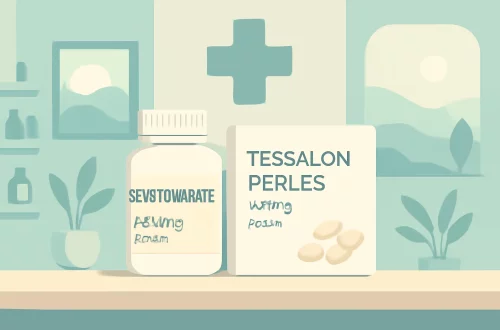
Exploring the Controversy of Incest Captions in Modern Media
In recent years, the landscape of media representation has evolved significantly, giving rise to discussions surrounding the portrayal of taboo subjects. Among these, the topic of incest—especially in the form of captions accompanying images or narratives—has emerged as a particularly contentious issue. While some argue that such representations serve to challenge societal norms and provoke necessary conversations, others contend that they trivialize serious issues and perpetuate harmful stereotypes. This complex interplay between art, ethics, and societal values raises critical questions about the responsibilities of creators and consumers alike.
The advent of social media has provided a platform for these discussions, allowing for a rapid exchange of ideas and opinions. As content becomes increasingly accessible, the impact of provocative imagery and captions can be amplified, prompting audiences to confront their own beliefs and biases. This ongoing dialogue is not just about the content itself, but also about the implications it has for society at large. The controversy surrounding incest captions is emblematic of broader cultural tensions—between artistic freedom and moral responsibility, between shock value and genuine expression.
As we navigate this intricate terrain, it is vital to consider the various dimensions of the conversation. What do these representations say about our collective consciousness? How do they reflect or distort real-life experiences and relationships? The answers to these questions may not be straightforward, but they are essential to understanding the role of modern media in shaping our perceptions of taboo subjects.
The Impact of Taboo Themes in Media
Taboo themes in media, including incest, can evoke strong reactions and provoke critical discussions. Throughout history, various forms of art and literature have pushed boundaries to explore complex and often uncomfortable subjects. The impact of these themes extends beyond mere shock value; they encourage audiences to reflect on societal norms, values, and the intricacies of human relationships.
In many cultures, incest is considered one of the most profound taboos, often associated with moral, ethical, and legal implications. Yet, its representation in media—whether through films, literature, or online platforms—can serve as a mirror reflecting societal fears, desires, and contradictions. By confronting these themes, creators invite audiences to engage in a dialogue about what is acceptable and what lies beyond the pale.
Furthermore, the portrayal of incest in media can lead to a desensitization effect. When such themes are repeatedly depicted, viewers may become numb to their significance, causing them to overlook the real-life ramifications of these issues. This desensitization can be particularly concerning when it comes to younger audiences who may not possess the critical tools needed to navigate such complex narratives. In this context, the responsibility of creators becomes paramount; they must balance artistic expression with ethical considerations.
Moreover, the way in which incest is depicted often reflects broader societal attitudes toward sexuality, power dynamics, and familial relationships. For instance, narratives that romanticize or trivialize incest can perpetuate harmful stereotypes and normalize abusive dynamics. On the other hand, stories that approach the subject with sensitivity and nuance can shed light on the psychological complexities involved, fostering empathy and understanding.
In conclusion, the impact of taboo themes in media is multifaceted. While these representations can spark important conversations, they also carry the potential to reinforce harmful stereotypes and desensitize audiences to serious issues. As consumers of media, it is essential to approach these narratives critically, questioning their implications and the values they convey.
The Role of Social Media in Shaping Discussions
Social media has become a powerful tool in shaping contemporary discussions around sensitive topics, including incest. Platforms like Twitter, Instagram, and TikTok allow for instantaneous sharing and engagement, creating a space where individuals can voice their opinions and experiences. This democratization of discourse has both positive and negative implications for how taboo subjects are addressed.
On one hand, social media can serve as a vital platform for marginalized voices. Individuals who have experienced incest or related trauma may find community and support through online spaces, sharing their stories and advocating for awareness. These narratives can help to humanize complex issues and challenge prevailing stereotypes, fostering empathy among audiences who may not have direct experience with such topics.
Conversely, the rapid dissemination of content on social media can lead to the spread of misinformation and sensationalism. Incest captions, often designed to capture attention, can sometimes trivialize the seriousness of the subject matter. This sensationalism can overshadow the lived experiences of those affected by incest, reducing their stories to mere fodder for clicks and likes. As a result, discussions can devolve into polarized arguments, with individuals either defending or condemning the content without engaging in a deeper exploration of the issues at stake.
Additionally, the ephemeral nature of social media content poses challenges for sustained dialogue. A provocative caption may generate a flurry of responses, but the conversation often dissipates quickly, leaving little room for nuanced exploration. This fleeting engagement can hinder efforts to foster understanding and promote constructive discussions around sensitive subjects.
Moreover, social media algorithms tend to prioritize engagement over content quality, often amplifying the most sensational narratives. This dynamic can create echo chambers where particular viewpoints are reinforced, further polarizing discussions about taboo themes. In this context, critical media literacy becomes essential; users must learn to discern credible voices from those that perpetuate harmful stereotypes or misinformation.
In summary, social media plays a dual role in shaping discussions around incest and other taboo themes. While it can amplify marginalized voices and foster community, it also poses risks related to sensationalism and misinformation. As users of these platforms, it is crucial to engage thoughtfully and critically, recognizing the power of our words and the impact they may have on broader conversations.
Ethical Considerations for Creators
For creators in the media landscape, the ethical considerations surrounding the portrayal of incest are complex and often fraught with tension. The balance between artistic freedom and social responsibility is a delicate one; creators must navigate the potential consequences of their work while remaining true to their artistic vision.
One of the primary ethical concerns is the potential for harm. When depicting incest, creators must consider how their narratives may affect viewers, particularly those who have experienced similar situations. Sensationalized portrayals can trivialize the trauma associated with incest, reinforcing harmful stereotypes and potentially causing distress to survivors. As such, creators bear a significant responsibility to approach the subject with care and sensitivity, ensuring that their work does not contribute to further stigmatization or misunderstanding.
Moreover, the intent behind the depiction matters greatly. Creators must ask themselves whether their portrayal serves a purpose beyond mere shock value. Is the work intended to provoke thought, challenge societal norms, or foster understanding? If the only goal is to elicit a reaction, the ethical implications become more pronounced. Responsible storytelling requires a commitment to exploring the complexities of human relationships and the psychological ramifications of taboo subjects.
Another ethical consideration is the representation of power dynamics within incest narratives. Many depictions can perpetuate harmful tropes, such as the romanticization of abusive relationships or the normalization of coercive behaviors. Creators should strive to depict these dynamics realistically, acknowledging the inherent imbalances of power and the potential for exploitation. By doing so, they can contribute to a more nuanced understanding of the subject and advocate for healthier representations of relationships.
Additionally, creators should engage with their audience and encourage dialogue around their work. Providing context and inviting discussions can foster a more informed understanding of the issues at hand. This engagement can also empower viewers to share their perspectives, creating a space for collective reflection and growth.
In conclusion, ethical considerations for creators addressing incest in media are multifaceted. Balancing artistic expression with social responsibility requires a thoughtful approach that prioritizes the well-being of individuals and communities. By engaging critically with their narratives and fostering dialogue, creators can contribute to a more nuanced understanding of taboo subjects and the complexities of human relationships.
In navigating these intricate discussions, it is crucial to recognize the potential impact of media representations on societal attitudes and individual experiences. Ultimately, a thoughtful, empathetic approach to storytelling can illuminate the complexities surrounding taboo subjects, fostering understanding and compassion within our communities.




